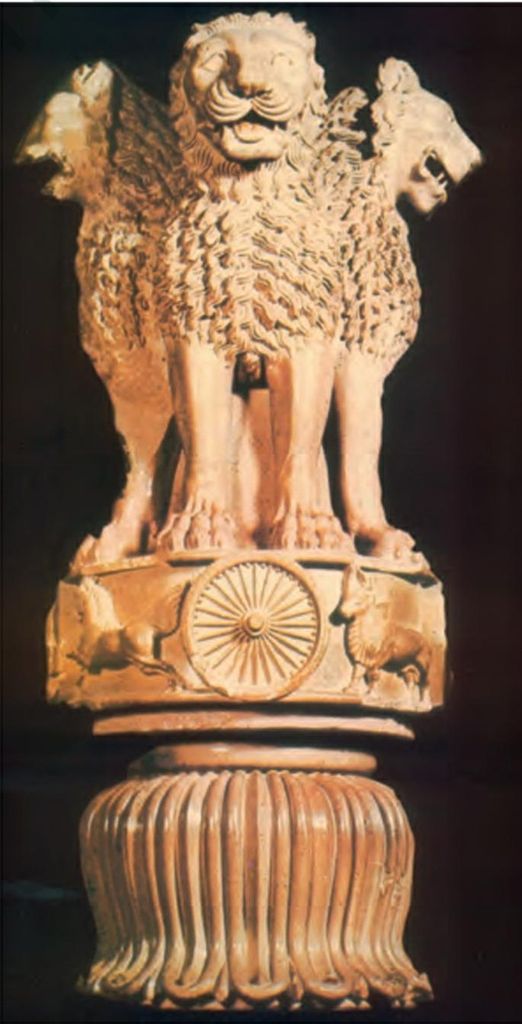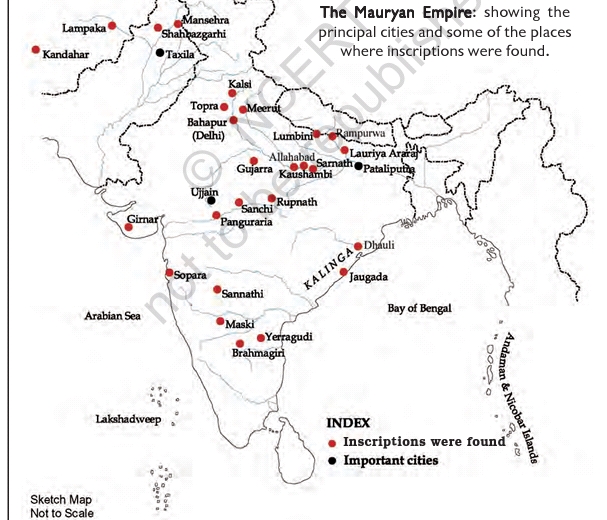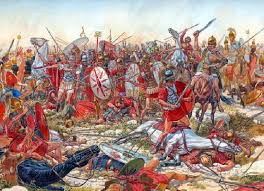Diff b/w Empire & Kingdom & How was an Empire ruled?
Difference between Empire and Kingdom; How an empire was ruled
All of us have seen lions on currency notes and coins but have you ever thought the reason behind it. It’s having a long history. Lions were carved on stone as well and were placed on a massive pillar at Sarnath.

Ashoka was one of the greatest ruler, history can ever have. He always had his instructions Inscribed on inscription and rock surfaces. Before we find out about about those inscriptions and instructions contained, we will first find out why the great Ashokan Empire was called so?
The Ashokan Empire that he ruled was actually founded by his grandfather Chandragupta Maurya, some about 2300 years ago. He was a wise man. He was called Chanakya or Kautilya. His ideas were written down in a book name Arthashastra.
Basically they run a Dynasty. When members of the same family becomes ruler one after another, then the family is called a Dynasty. So the Ashoka belonged to the Maurya Dynasty with 3 great rulers- Chandragupta à his son Bindusaraà his son Ashoka.

The above shown map has red dots at few places which mark the places where Ashokan Inscription have been found, while the few marked with black dots are the capitals Pataliputra, Taxila, Ujjain. These were the cities where resided the merchants, officials and craft persons.
In some parts of Central Asia, herders, hunters and Gatherers still existed who collected forest produce or hunted animals for their food.
Needless to mention, that people of different regions spoke different languages. Their food, their clothing, their lifestyles were completely different.
HOW ARE EMPIRES DIFFERENT FROM THE KINGDOMS?
Empires are bigger than the kingdoms, so the resources needed by the empires are huge than those required by the kings. Even the empires need to be protected by huge armies. Even the officials needed are more as compared to the kings to collect the taxes.
Different parts of the empire were ruled differently. The parts of Pataliputra were under direct control of the emperor. Even the officials were punished who did not obey the ruler's instructions. Officials were been paid. Spies were there who kept an eye on these officials.
There were other provinces as well, which were ruled by the provincial capital such as Ujjain, Taxila. These places were also scrutinized at times by royal princes in local attire.
Mauryas controlled roads and rivers, which were important for transport, resources for taxes and tributes.
From Arthashastra, we came to know that the North west were the important centres for blankets, while the South India was important for gold and other precious stones.
Tributes were collected as and when possible from the people who gave willingly.
Some parts had forest regions as well, which provided elephants, timber, wax , honey to the officials.
Ashoka, Kalinga war & Ashoka's Dhamma
Ashoka – The emperor
Ashoka, Kalinga War, Ashoka's Dharma
Ashoka was the most famous Mauryan ruler. He was the first to have started spreading his messages through inscriptions. His instructions were written in Prakrit Language and in Brahmi Script.
Kalinga War

Kalinga was the ancient name of coastal Orissa. He fought war to capture Kalinga. But when saw violence and bloodshed every where in the battlefield he was terrified. His heart changed and he decided to give up violence and wars after that incident. He was the first ever ruler who gave up wars after winning.
Ashoka's Dhamma
Ashoka's Dhamma did not believe in the worship of God or sacrifice. He was greatly inspired by the teaching of Buddha. There were number of problems in his empire.
- Everybody followed Different religion which at times led to conflict.
- Animals were sacrificed.
- Slaves and servents were badly treated.
- There were quarrels among the family members as well as between neighbours.
Ashoka believed it was his duty to solve these problems. So he appointed officials known as Dhamma Mahamatta, who went from places to places guiding people about Dhamma. Ashoka also asked his officials to read his inscribed messages to them who could read them by themselves. He also sent his Dhamma messages to other lands like Syria, Egypt, Greece, Srilanka. He also built roads, rest houses and dug Wells. He arranged medical treatment for people and animals both.

 Indira Gandhi Memorial High School
Indira Gandhi Memorial High School
